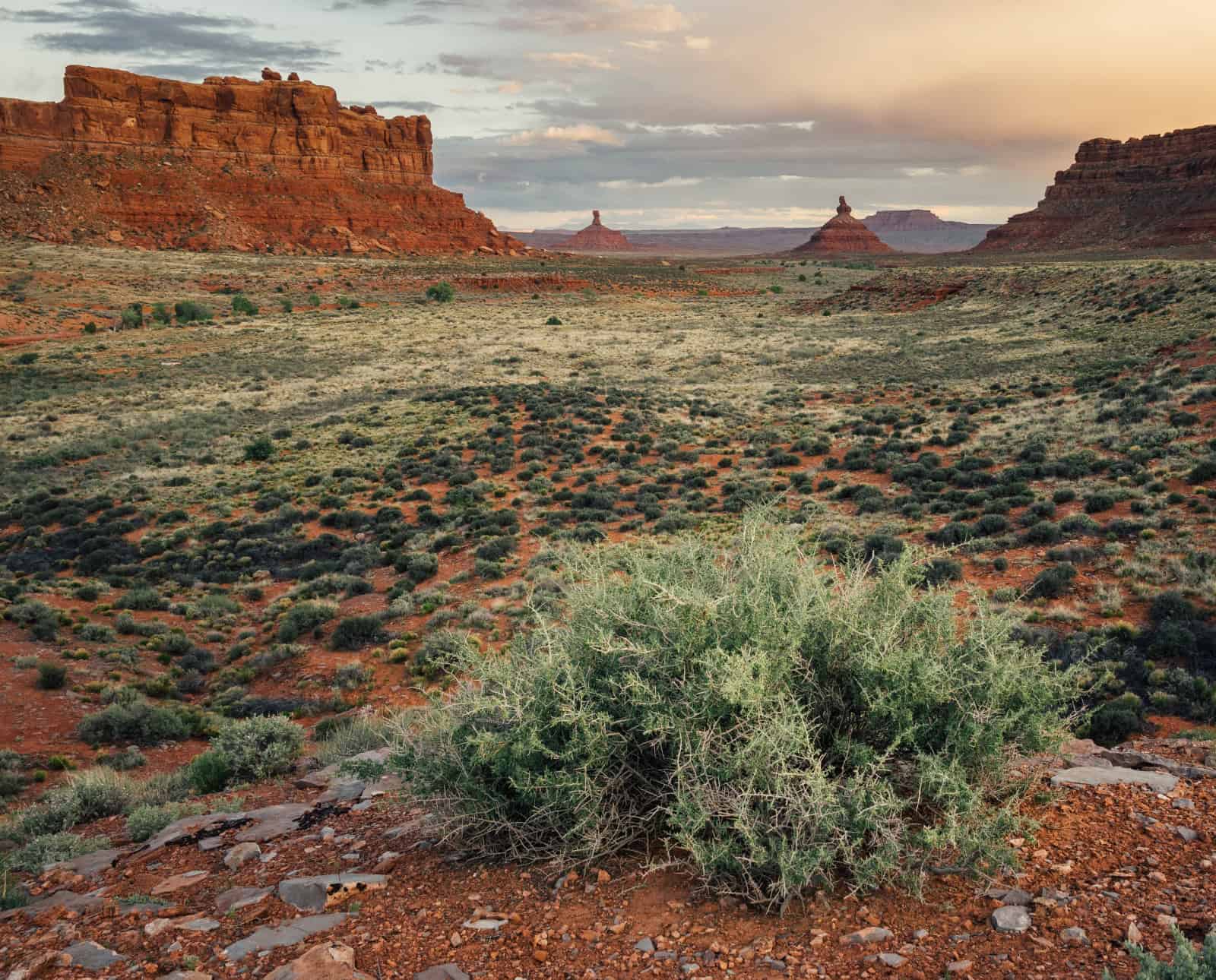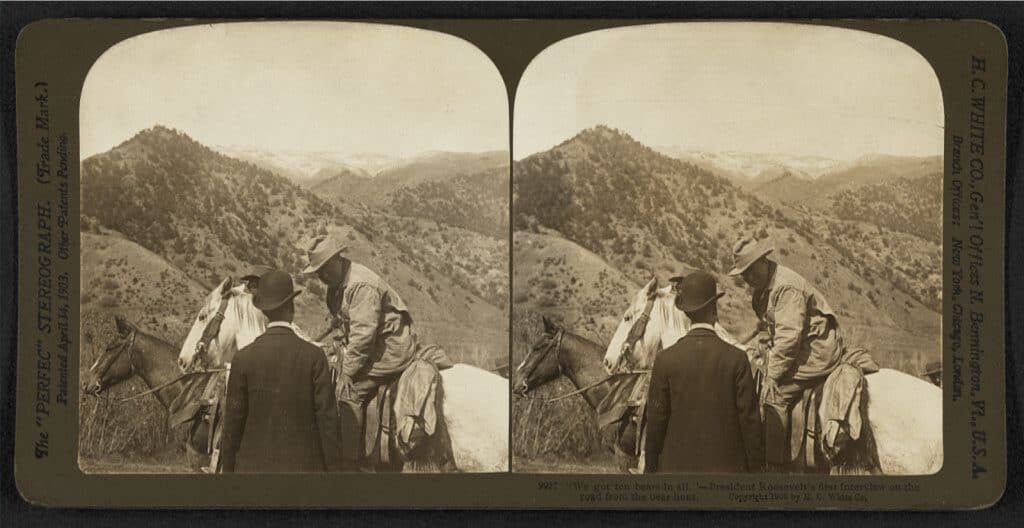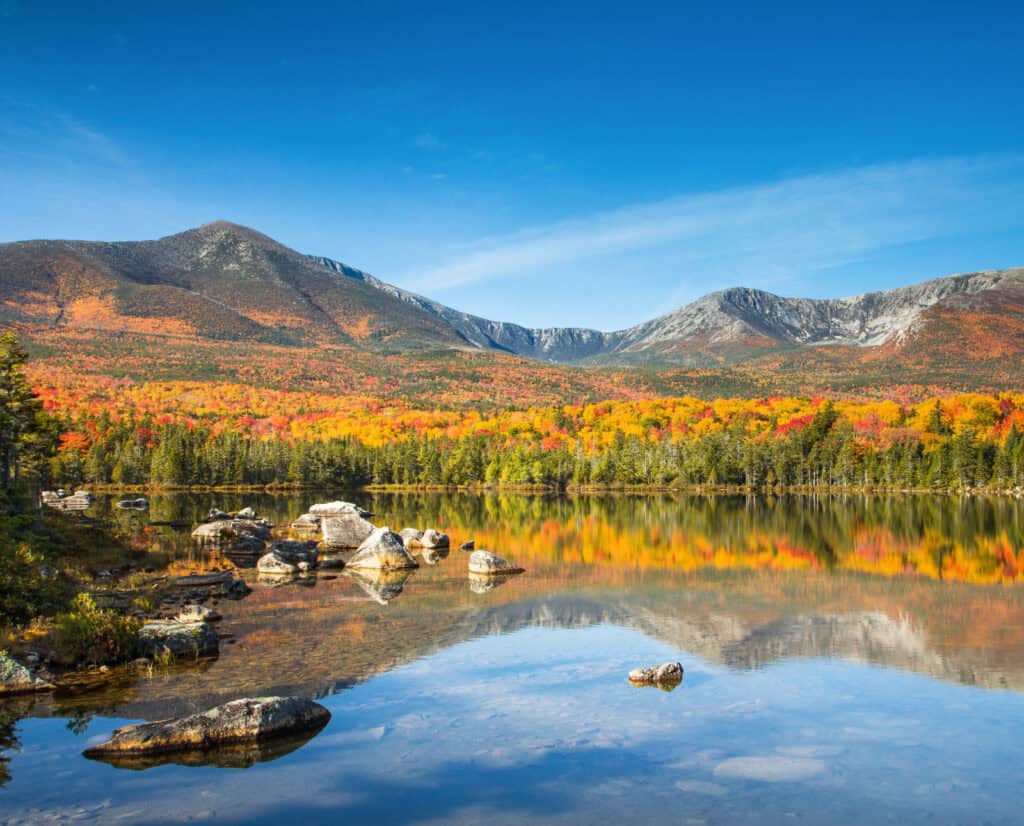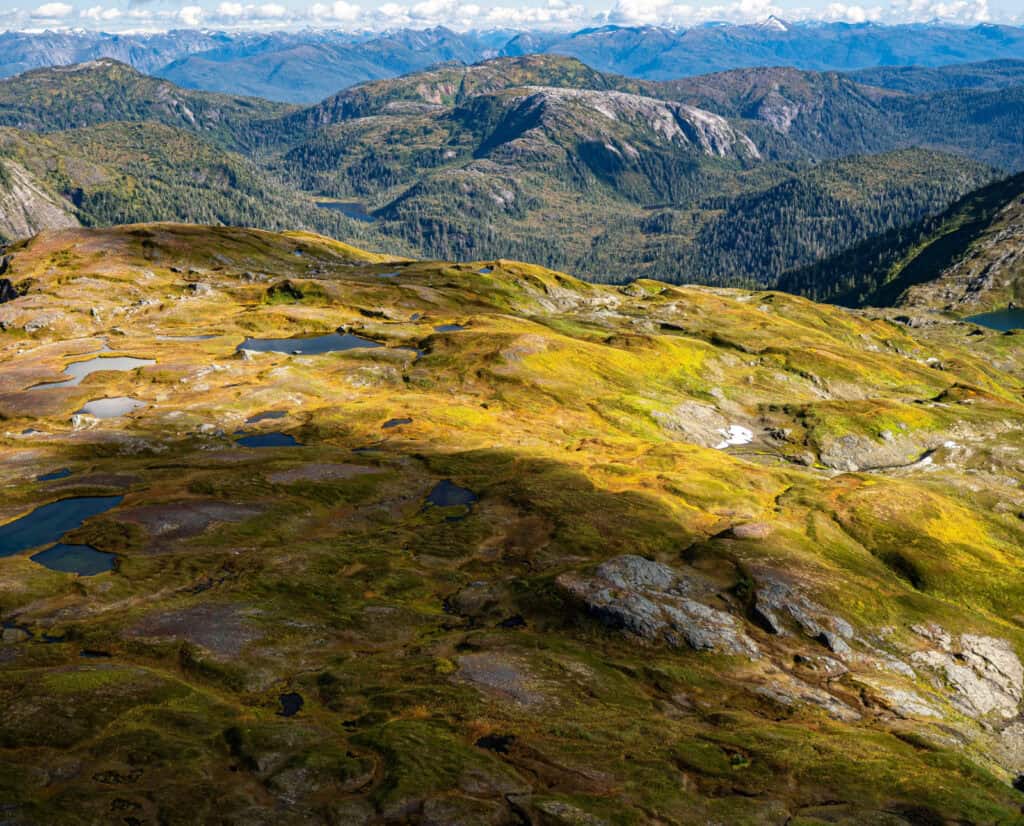Home » Conservation » How Do National Monuments Affect Hunting Access?
How Do National Monuments Affect Hunting Access?

A.J. DeRosa, founder of Project Upland, is a New England…
The origin and history of the Antiquities Act and presidential national monument powers in the United States.
The Antiquities Act of 1906 and the creation of national monuments are closely linked. The Antiquities Act granted presidents the authority to designate national monuments without Congressional approval. It also established regulations for archaeological investigations on federal lands. This includes permitting, artifact removal, and the requirement that significant objects be preserved in public museums.
National monuments, when considered in the context of large tracts of land, are wins for hunting access. However, due to the complexity of the topic and the fact that most national monuments have no hunting significance whatsoever, misunderstandings about how this public land designation affects our hunting rights are common. Furthermore, the word “Antiquities” can sometimes cause confusion regarding the National Monument designation process.
In this article, we will explore the legal authority behind national monuments. We will also look at the history of the lands affected. Finally, we’ll review the presidents who have exercised or challenged this power since President Theodore Roosevelt signed An Act for the Preservation of American Antiquities into law on June 8th, 1906.
Creating National Monuments is a Presidential Power
As you might expect, this story is as much about Theodore Roosevelt, the “Conservation President,” and his legacy as it is about presidential authority to designate and protect public lands.
Before the creation of the Antiquities Act, the only explicit authority a president had to designate public lands came from the Forest Reserves Act of 1891. This act eventually led to the National Forest system as we know it today. Outside of that law, however, Congress held the sole authority to create and designate public lands.
Among many things, Theodore Roosevelt tested presidential power in one of the most progressive and controversial ways. His designation of over 50 bird sanctuaries through executive orders was highly unpopular, particularly within his own party. These orders halted industrial activities on protected lands, including market hunting, land development, and mineral and energy extraction. Many argue—and I agree—that these bird sanctuaries, most of which later became National Wildlife Refuges, played a crucial role in preventing the extinction of numerous bird species in the 20th century.
That topic, however, deserves an entire article of its own.
But Roosevelt wanted to do more. Enter Congressman John Lacey, a key figure in conservation policy and the author of the Lacey Act of 1900. Lacey served as the lead sponsor of the Antiquities Act. It gained broad support from the Democrats and progressive Republicans of the time. As expected, there was also significant resistance, primarily from private and capitalist interests. Ultimately, the more conservation-focused approach prevailed.
Following the Act’s passage, President Theodore Roosevelt created the first national monument, Devils Tower in Wyoming, on September 24, 1906. By the end of his presidency, he designated 18 national monuments.

Requirements for National Monument Designation
Section 2 of the Antiquities Act grants the president the power to designate national monuments. It states: “The President of the United States is authorized, in his discretion, to declare by public proclamation historic landmarks, historic and prehistoric structures, and other objects of historic or scientific interest that are situated upon the lands owned or controlled by the Government of the United States to be national monuments, and may reserve as a part thereof parcels of land, the limits of which in all cases shall be confined to the smallest area compatible with proper care and management of the objects to be protected.”
Three key elements of this statute are as follows:
- The land must already be “owned or controlled by the Government of the United States.”
- The area must contain “historic landmarks, historic and prehistoric structures, or other objects of historic or scientific interest.”
- The designated land must be “the smallest area compatible with the proper care and management of the objects to be protected.”
Since the passing of the Antiquities Act, 18 of the 21 presidents since Theodore Roosevelt have exercised the presidential power to create a national monument 159 times. The only presidents during that period who did not create national monuments are Richard Nixon, Ronald Reagan, and George H. W. Bush.
How Does Creating a National Monument Impact Federal Land Protections?
So if the federal government already owns the land, what does creating a national monument actually do?
The most significant protection a national monument provides is shielding the land from commercial development, including mining and energy. As hunters and conservationists, these designations are permanent wins for future generations. It makes it extremely difficult to sell off these lands or open them for mineral or energy extraction of any kind. It’s important to note that even if public lands, national monuments or otherwise, are federally owned, lands that are open to extraction can become closed to hunting.
However, it is important to clarify that national monuments are often not massive tracts of land. Instead, they tend to include places like the Statue of Liberty or Indigenous cultural sites. The National Oceanic and Atmospheric Administration (NOAA) often manages the largest national monuments, which are marine-based. Many of these national monuments allow recreational angling, but in almost all cases, they prohibit commercial fishing.
On land, the largest national monuments are typically located in the West or in Alaska. In the East, the vast Katahdin Woods and Waters National Monument is located in Maine. Typically, the Bureau of Land Management (BLM), U.S. Fish and Wildlife Service, and U.S. Forest Service (USFS) manages them. They also happen to be the agencies most relevant to hunters, as they generally allow liberal hunting and angling access (including professional guiding).
Furthermore, many of these national monuments still allow livestock grazing, though they may impose stricter requirements and changes to future permitting. However, the designation typically grandfathers in any pre-existing livestock use by default.
The most restrictive policies tend to apply to monuments managed by the National Park Service (NPS). This agency oversees 89 of the 138 national monuments. However, most of these NPS-managed sites are small. They include historical houses or structures, and many are on less than an acre of land. Exceptions where hunting is allowed within NPS-managed national monuments include those with significant hunting-relevant land, such as areas in Alaska and Katahdin Woods and Waters National Monument.

The Economics of National Monuments
Creating a national monument affects government funding. As you can guess, preventing oil, gas, or even green energy development by establishing a national monument results in the loss of revenue to the U.S. government. That is, if those lands had energy opportunities in the first place.
In 2024, the Biden administration collected $16.4 billion dollars in royalties and fees from energy extraction. That was the highest revenue collected since 1982. The less talked about and more sinister issue is related to hardrock minerals like gold, silver, copper, and lithium. Mining causes massive environmental impacts on the landscape, yet companies pay no royalties for these extractions.
Alternatively, designating a national monument opens up new opportunities for funding for habitat and conservation. Grants and governmental programs become available to lands designated as national monuments. Plus, from a local economy perspective, us rural folk often benefit from a monument designation. Multiple research studies have correlated monument designation with economic opportunity.
In the study “National Monuments and economic growth in the American West,” researchers found “that monuments increased the average number of establishments and jobs in areas near monuments; increased the average establishment growth rate; had no effect, positive or negative, on the number of jobs in establishments that existed pre-designation; and had no effect on mining and other industries that use public lands. On net, protecting lands as national monuments has been more help than hindrance to local economies in the American West.”
Major Historical Wins for Hunters with National Monuments
Whether we realize it or not, hunters have profoundly benefited from national monument designations. As a community, we should celebrate this executive power. It is a means for us in the working class to access vast tracts of unencumbered land. It preserves our truly wild places and experiences.
Alaska
President Carter used the national monument mechanism often. He became the second-largest protector of public lands as a U.S. president, excluding marine areas. In the late 1970s, the mining and oil industries, along with other private interests, engaged Congress in a major battle over tens of millions of acres of public land in Alaska. On December 1, 1978, President Carter made the controversial decision to designate 17 national monuments, totaling 56 million acres, effectively ending Congress’s fight. He made one of the most controversial land policy decisions of the time—his Teddy Roosevelt-inspired moment.
Eventually, these lands were removed from national monument designation when Congress passed the Alaska National Interest Lands Conservation Act (ANILCA) of 1980. The law reclassified these lands into national wildlife refuges, preserves, and national parks. More recently, the hunting community fiercely debated these lands when the government considered 28 million acres in Alaska for mineral and energy extraction. President Biden ultimately protected them in a highly controversial decision.
Fearmongering articles spread misinformation by claiming that all these lands were completely closed to hunting. However, more fact-based reports highlighted legitimate concerns about reduced access for caribou hunting. They note that the number of non-resident tags was insignificant compared to the broader issues at hand. The Federal Subsistence Board responded by restricting caribou hunting to local subsistence hunters until the caribou population reached a sustainable level. However, all other forms of hunting—including bears, wolves, moose, and small game—remain open in these areas.
Bears Ears and Grand Staircase-Escalante National Monuments
Without a doubt, the most dramatic events (and wins) for hunters and national monuments revolve around Bears Ears and Grand Staircase-Escalante National Monuments. In 1996, President Bill Clinton established Grand Staircase-Escalante National Monument, protecting 1.9 million acres. Later, on December 28, 2016, President Barack Obama designated Bears Ears National Monument at 1.35 million acres by proclamation. Both of these monuments remain open to hunting and are protected from closures related to mineral or energy development.
However, these two monuments also set the stage for the biggest challenges to the Antiquities Act. This led to the first instance of a president creating a net negative impact on public land protections by challenging, not using, the Antiquities Act.

Attempts to Undo the Legacy of the Antiquities Act and the Vision of Theodore Roosevelt
On January 14, 2025, with one foot out of the White House, President Biden signed two proclamations. He created Chuckwalla National Monument (624,000 acres) and Sáttítla Highlands National Monument (224,000 acres). These designations brought the total amount of public land protected via the Antiquities Act during his presidency to nearly 9 million acres. This ranks him among the top five presidents in terms of creating protected public lands. That total also includes the restoration of two national monuments—Bears Ears and Grand Staircase-Escalante—to their original size. Those two monuments are ground zero for one of the most unusual and controversial interpretations of the Antiquities Act.
Executive Order 13792
The first net negative use of presidential powers under the Antiquities Act to reduce protections for public land occurred on April 26, 2017 by President Donald Trump. Executive Order 13792, titled “Review of Designations Under the Antiquities Act,” challenged multiple monument designations. The most contentious actions were the reduction of Bears Ears National Monument by 1.1 million acres (an 85 percent decrease) and the cutting of Grand Staircase-Escalante National Monument by 50 percent.
Legal battles ensued, many of which were based on the absence of language addressing the removal of a national monument. The law is rooted in the idea of creation. Lawyers argued that the President lacks the authority to reduce these areas. This interpretation suggests that the Act grants only one-way authority, requiring an act of Congress to decrease a monument’s size or remove its designation.
The Supreme Court has upheld the Antiquities Act’s authority every time it has been challenged. However, it has never ruled on whether a president can reduce or revoke a monument. This debate reached the D.C. Appeals Court, but the case was dropped after President Biden restored both national monuments to their original forms.
Project 2025
Project 2025 has called for the complete repeal of the Antiquities Act. Its section on the Department of the Interior was written by Trump’s former BLM Chief, William Perry Pendley.
The chapter states:
“Although President Trump courageously ordered a review of national monument designations, the result of that review was insufficient in that only two national monuments in one state (Utah) were adjusted. Monuments in Maine and Oregon, for example, should have been adjusted downward given the finding of Secretary Ryan Zinke’s review that they were improperly designated. The new Administration’s review will permit a fresh look at past monument decrees and new ones by President Biden.
Furthermore, the new Administration must vigorously defend the downward adjustments it makes to permit a ruling on a President’s authority to reduce the size of national monuments by the U.S. Supreme Court. Finally, the new Administration must seek repeal of the Antiquities Act of 1906, which permitted emergency action by a President long before the statutory authority existed for the protection of special federal lands, such as those with wild and scenic rivers, endangered species, or other unique places.”
The Future of the Antiquities Act
On March 15, 2025, we learned that the new Trump administration intends to reverse the Biden administration’s designations of Chuckwalla and Sáttítla Highlands National Monuments. In their statement, they announced the decision to “terminate proclamations declaring nearly a million acres constituting new national monuments that lock up vast amounts of land from economic development and energy production.” This move further cements President Trump’s legacy as a net negative for public land protection.
Once again, the Antiquities Act may find itself before the nation’s highest court—this time to determine whether a sitting president has the authority to dismantle the conservation legacy of past administrations.
Large national monuments are public lands open to all, including hunters, safeguarded from industrial exploitation and private interests. Yet the future of this crucial presidential tool for protecting public lands and securing public hunting access remains uncertain. Since its inception in 1906, the Antiquities Act has been a landmark victory for working-class Americans. It ensures that public lands remain in public hands.
In the spirit of President Theodore Roosevelt—a disruptor in the name of conservation and a champion of public lands—using the Antiquities Act to establish national monuments honors his enduring legacy.
A.J. DeRosa, founder of Project Upland, is a New England native with over 35 years of hunting experience across three continents. His passion for upland birds and side-by-side shotguns has taken him around the world, uncovering the stories of people and places connected to the uplands. First published in 2004, he wrote The Urban Deer Complex in 2014 and soon discovered a love for filmmaking, which led to the award-winning Project Upland film series. A.J.'s dedication to wildlife drives his advocacy for conservation policy and habitat funding at both federal and state levels. He serves as Vice Chair of the New Hampshire Fish & Game Commission, giving back to his community. You can often find A.J. and his Wirehaired Pointing Griffon, Grim, hunting in the mountains of New England—or wherever the birds lead them.



